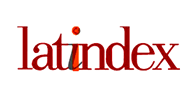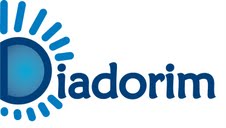Evaluation of quality of life in patients with ocular pterygium in the municipality of Palmas
DOI:
https://doi.org/10.13037/ras.vol14n47.3093Keywords:
Pterygium, Quality of life, Health questionnaires, Statistical analysis, Visual acuityAbstract
Introduction: Pterygium is characterized by growth of fibrovascular tissue of the bulbar conjunctiva onthe cornea. It is a disease with greater frequency in individuals of tropical countries, affecting mainly menaged over 30 years. Objective: This study aimed to evaluate the quality of life of patients with different sizesof pterygium, in the city of Palmas/TO, Brazil. Materials and methods: Observational, cross-sectionalstudy with 60 patients, allocated into 03 groups (I, II, and III) of 20 patients each, which were organizedaccording to the degree of pterygium (1, 2, and 3, respectively). An epidemiological questionnaire andanother on quality of life (NEI VFQ-25) were completed, and the data was submitted to statistical analysis.Results: When comparing the visual acuity and quality of life scores among the groups, according tothe degree of pterygium, it was observed that in Group I, LogMAR (Logarithm of the Minimum Angleof Resolution) visual acuity was 0.015 (±0.067); in group II, visual acuity was 0.080 (±0.132); and ingroup III was 0.067 (±0.127), with p=0.12. Conclusion: There was a change in quality of life scores inboth groups, but without statistical significance among them, although differences have been found in thesubjective assessment of visual quality among groups. We recommend further studies with a larger numberof participants.Downloads
References
1. Bradley JC, Yang W, Bradley RH. The science of pterygia. Br J Ophthamol. 2010;94(7):815-820.
2. Leite AO. Incidência de neoplasia intraepitelial conjuntival em pterígio [dissertação de mestrado]. Campo Grande: Universidade Federal de Mato Grosso do Sul; 2011.
3. Hosni FA. Pterygium in Qatar. Ophthalmologica. 1977;174(2):81-87.
4. Singh MM, Murthy GV, Venkatraman R, Rao SP, Nayar S. A study ocular morbidity among elderly population in a rural area of central India. Indian J Ophthalmol. 1997;45(1):61-65.
5. Taylor HR. The prevalence of corneal disease and cataracts in Australian aborigines in Northwestern Australia. Aust J Ophthalmol. 1980;8(4):289-301.
6. Ribeiro LAM, Ribeiro LFGM, Castro PRA, Silva FDL, Ribeiro VMWAM, Portes AJF, et al. Characteristics and prevalence of pterygium in small communities along the Solimões and Japurá rivers of the Brazilian Amazon Rainforest. Rev Bras Oftalm. 2011;70(6):358-362.
7. Alves MR, Vitor G. O tratamento do pterígio. Rev Bras Oftalmol. 2005;64(5):351-362.
8. Mangione CM, Phillips RS, Lawrence MG, Seddon JM, Oray EJ, Goldman L. Improved visual function and attenuation of declines in health-related quality of life after cataract extraction. Arq of ophthalmol. 1994;112(11):14-19.
9. Kuyken W, Orley J, Hudelson P, Sartorius N. Quality of life assessment across cultures. Int J Mental Health. 1994;23(2):5-27.
10. Ferraz EVA, Lima CA, Cella W, Arieta CEL. Adaptação de questionário de avaliação da qualidade de vida para aplicação em portadores de catarata. Arq Bras Oftalmol. 2002;65(3):293-298.
11. Simão LM, Lana-Peixoto MA, Araújo CR, Moreira MA, Teixeira AL. The Brazilian version of the 25-item national eye institute visual function questionnaire: translation, reliability and validity. Arq Bras Oftalmol. 2008;71(4):540-546.
12. Schellini SA, Shiratori CN, Spirandelli PH, Shiratori CA, Padovani CR. Intra-operative use of 5-fluorouracil in pterygium surgery. Arq Bras Oftalmol. 2000;63(2):111-114.
13. Schellini SA, Veloso CEDR, Lopes W, Padovani CR, Padovani CRP. Characteristics ospatientes with pterygium in the Botucatu region. Arq Bras Oftalmol. 2005;68(3):291-294.
14. Panchapakesan K, Hourihan F, Mitchell P. Prevalence of pterygium and pinguecula: the blue mountains eye study. Aust N Z J Ophtalmol. 1998;26(1):2-5.
15. Luthra R, Nemesure BB, Wu SY, Xie SH, Leske MC. Frequency and risk factors for pterygium in the Barbados eye study. Arch Ophthalmol. 2001;119(12):1827-32.
16. Instituto Brasileiro de Geografia e Estatística. População e condição no domicílio [acesso em 2013 Out 14]. 2010. Disponível em: ftp://ftp.ibge.gov.br/Censos/Censo_Demografico_2010/ Resultados_do_Universo/tabelas_pdf/tab1.pdf
17. McCarty CA, Fu CL, Taylor HR. Epidemiology of pterygium in Victoria, Australia. Br J Ophthalmol. 2000;84(3):289-92.
18. Wikipédia [homepage na Internet]. Palmas [acesso em 2016 Fev 4]. Disponível em: http://pt.wikipedia.org/wiki/Palmas
19. Stern GA, Lin A. Effect of pterygium excision on induced corneal topographic abnormalities. Córnea. 1998;17(1):23-7.
Downloads
Published
Issue
Section
License
Copyright (c) 2016 Marco Túlio Chater Viegas, Sandra Maria Botelho Pinheiro, Fabiana Richa Valim Viegas, Adojhones Frankcian da Silva Santos, Wande Gonçalves Diniz, Núbia Cristina de Freitas Maia

This work is licensed under a Creative Commons Attribution-NonCommercial-NoDerivatives 4.0 International License.
Policy Proposal for Journals offering Free Delayed Access
Authors who publish in this magazine agree to the following terms:
- Authors maintain the copyright and grant the journal the right to the first publication, with the work simultaneously licensed under a Creative Commons Attribution License after publication, allowing the sharing of the work with recognition of the authorship of the work and initial publication in this journal.
- Authors are authorized to assume additional contracts separately, for non-exclusive distribution of the version of the work published in this magazine (eg, publishing in institutional repository or as a book chapter), with the acknowledgment of the authorship and initial publication in this journal.
- Authors are allowed and encouraged to publish and distribute their work online (eg in institutional repositories or on their personal page) at any point before or during the editorial process, as this can generate productive changes, as well as increase impact and citation of the published work (See The Effect of Open Access).









